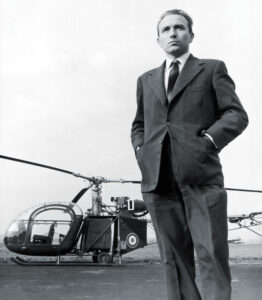Stick and Rudder: An Explanation of the Art of Flying
by Wolfgang Langewiesche
In 1944 aviation writer and test pilot Wolfgang Langewiesche wrote Stick and Rudder, a primer about flying that was destined to become a classic of aviation literature.
His book has never been out of print since that time, and for good reason; it is a “how to” manual that provides clear explanations from a pilot’s viewpoint of, as Langewiesche calls it, the art of flying. Stick and Rudder is reportedly in its 70th printing.
My first reading of Langewiesche’s book was an eye-opener; I wished I had read Stick and Rudder before, rather than after, my primary flight training. Doing so would no doubt have expedited my journey up the learning curve.
It is no secret that aircraft were built and flown well before the theoretical underpinnings of flight were fully understood. Of course, by 1944 subsonic flight was well understood, but the misconceptions, falsehoods and bromides from an earlier time were still prevalent in civil aviation. And those things were killing people.
Stick and Rudder set things straight—it conveyed aeronautical knowledge in a way that pilots could use on a day-to-day basis, and it did so at a time when a large percentage of aviation accidents resulted from fundamental misunderstandings of the why and how of flying.
Today’s conventional aircraft fly just as they did 60 years ago, and the concepts that Stick and Rudder so successfully conveys are as applicable today as they were then. As the author put it, his book is “an attempt to refocus ‘theory of flight’ away from things that the pilot does not need to know about, and upon the things that actually puzzle him while he flies.”
The German-born Langewiesche— who while living in the Chicago area during the 1930s became fascinated by aviation and sold his car to pay for flying lessons—employed his considerable skills as a writer and also an academic (he had formerly been enrolled at the London School of Economics) to distill the bare essence of aerodynamic theory and aircraft handling in this innovative manual.
Look at how he handles the frequent hangar-flying debate about how a wing produces lift:
Perhaps you also remember the rather highbrow concept of circulation— how (in a manner of speaking, at least) the air flows around the wing, forward under the wing’s bottom surface, and back over its top surface; and how in doing so, creates lift. Forget that, too. It, too, is no doubt true, though of course an abstraction; and it is no doubt useful knowledge for engineers. For a pilot it, too, is useless knowledge: it, too, can be actually harmful if it is allowed to obscure the simpler fundamental fact of flight. The main fact of all heavier-than-air flight is this: the wing keeps the airplane up by pushing air down.
Langewiesche continues this approach in describing all phases of flight, acknowledging its complexities but providing actionable explanations for pilots—and in the process making a profound contribution to safer aviation.
To be sure, the physics of flight are complicated, and the study of its intricacies is fascinating. There are, of course, many more recent works that ably cover the subject in formidable detail.
But that’s not what Stick and Rudder is about. Instead, it’s about how to fly an airplane. And it is arguably the best book of its kind.
Originally published in the March 2008 issue of Aviation History. To subscribe, click here.




